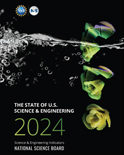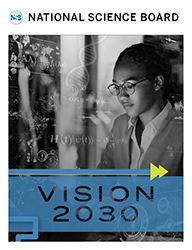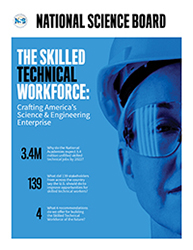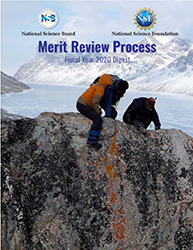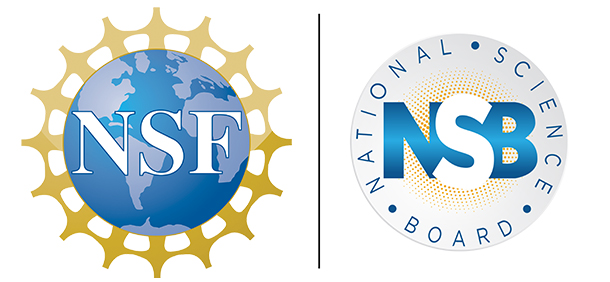
New report shows the importance of foreign-born talent to the U.S. STEM workforce
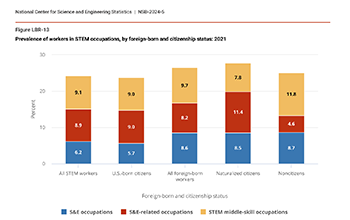
Prevalence of workers in STEM occupations, by foreign-born and citizenship status: 2021 (Credit and Larger Version)
May 30, 2024
The science, technology, engineering, and mathematics (STEM) workforce consists of 36.8 million U.S. workers, accounting for 24% of the total U.S. workforce. Between 2011 and 2021, the percentage of workers in STEM occupations increased from 22% to 24% of U.S. workers. More than half of these workers (52%) did not have a bachelor’s degree and were therefore classified as the skilled technical workforce (STW). Employment rates for STEM workers decreased less between 2019 and 2021 (88% to 86%) than non-STEM workers (83% to 79%).
These and similar trends are in The STEM Labor Force: Scientists, Engineers, and Skilled Technical Workers report that the National Science Board published today. This report is part of the 2024 edition of the congressionally mandated Science and Engineering Indicators report on the state of the U.S. science and engineering enterprise, prepared by the National Center for Science and Engineering Statistics under NSB guidance.
Another trend presented in the report is related to foreign-born workers in STEM occupations. In 2021, the proportion of foreign-born workers in STEM occupations (26%) was greater than the proportion of U.S.-born workers (24%), with more naturalized citizens in S&E-related occupations (11%) than noncitizens (5%) or U.S.-born citizens (9%).
“The U.S. excels at drawing top STEM talent from around the world,” says NSB member Julia Phillips. “Going forward, it’s vital that we cultivate the diversity of our domestic STEM talent, while strengthening our capacity to attract and retain international students and professionals.”
The STEM workforce is important to remaining competitive in the global economy, and many businesses rely on contributions from the STEM workforce. STEM workers play a key role in innovation and technological advancement and facilitate turning these advancements into useful products and services that contribute to tangible economic and societal benefits.
Other Findings:
- Median earnings for full-time, year-round workers in STEM occupations were about $19,100 per year more than those in non-STEM occupations in 2021.
- In 2021, men outnumber women in most STEM occupational groups, except for S&E-related occupations, with about twice as many women as men.
- STEM workers were disproportionately Asian and White in 2021, with the percentage of Black or African American (8% employed in STEM occupations vs. 11% overall) and Hispanic workers (15% employed in STEM vs. 18% overall) lower in STEM occupations than their percentage of the total workforce.
The STEM Labor Force: Scientists, Engineers, and Skilled Technical Workers is the last of the ten 2024 Science & Engineering Indicators reports that the NSB has published.
About Science and Engineering Indicators
Science and Engineering Indicators is a congressionally mandated report on the state of the U.S. and international science and engineering enterprise. Indicators provides high-quality quantitative information on the enterprise in a series of reports and a data tool that provides state-level data.
About the NSB
The National Science Foundation Act of 1950 charged the NSB with two roles: to be the governing board of the NSF and an advisor to Congress and the President on policy matters related to STEM research and STEM education. Selected for their distinguished service and accomplishments in academia, government, and the private sector, the Board’s 24 presidentially appointed members are leaders in STEM research and education.
About the NCSES
NSF’s National Center for Science and Engineering Statistics (NCSES) is the nation's leading provider of statistical data on the U.S. science and engineering enterprise. As a principal federal statistical agency, NCSES serves as a clearinghouse for the collection, interpretation, analysis, and dissemination of objective science and engineering data.
Media Contact: Andrew Zeidell, National Science Board, (703) 292-2434, azeidell@nsf.gov
Useful NSB Web Sites:
Home Page: http://www.nsf.gov/nsb
Media Contact: http://www.nsf.gov/staff/staff_bio.jsp?lan=nlymn&org=NSF
News: http://www.nsf.gov/nsb/news
Meetings: http://www.nsf.gov/nsb/meetings
Publications: http://www.nsf.gov/nsb/publications
Facebook: https://www.facebook.com/NationalScienceBoard
Twitter: Twitter: https://twitter.com/intent/user?screen_name=NSF_NSB
YouTube: https://www.youtube.com/channel/UCkrHRzuGSrPp2haQs0T_Pww
To view PDF documents, please download Adobe Acrobat Reader.
